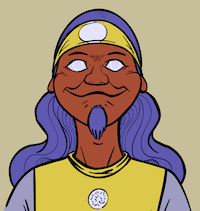Steadfast economics 101.
There is no standardized economy in the Ninth World. The most common system is barter, as explained in the Ninth World Guidebook. Here are some helpful excerpts that address the matter:
In other words, when the butcher tells the woman in the dairy that a certain amount of meat is worth 2 shins, she knows to give him 2 shins’ worth of cheese in payment, even though no shins or coins of any kind are exchanged.
In heavily populated areas like the Steadfast, people might earn a daily wage in shins—anywhere from a few shins for a peasant to a few hundred shins for a merchant. Many people, in both populated and rural areas, work for something other than money, such as housing, food, livestock, or other necessities.
When actual shins are used in trade, the party accepting the payment often refuses a small percentage of the objects as being worthless.
When setting the price of an object, one should think about how common or rare the item is, whether it’s in high demand, and whether it has some special use to those in the area.
These excerpts talk about common goods trade, but what about the numenera? How do you trade io, cyphers, or even artifacts? I like to think that there are two distinct markets in the Ninth World: the common goods market and the numenera market.
Common Goods Market
The common goods market uses shins or local coins. Players may play this by exchanging actual shins or common goods in shins value. I usually don’t present these scenes in detail. Players subtract shins or equipment from their inventory, get the goods and we move on.
Numenera Market
For cyphers, io, and low-level iotum, wealthy merchants, caravans, major city markets or Aeon Priests may have equivalent goods available for trade. These scenes are always played out as NPCs bartering with player characters. My players need to work the NPCs to get a good deal.
At the other end of the numenera scale, artifacts, rare iotum, vehicles, and plans are not readily available and are reserved for story play. These transactions are the equivalent of “exchanging nuclear codes for diamonds”. Significant trade opportunities, these are story based intrigues that involve tense negotiations, backstabbing, and double-dealing shenanigans. Not available in your local store.
Personal Trade
So how many shins does an average person have for trade? We can use the daily wage table from the Ninth World Guidebook (page 31). An average person should have 1 to 3 months worth of daily wages available for trade.
A chiurgeon, for example, might have about 100 shins, but due to the nature of their job, they’re likely to have a few oddities and 1d4 cyphers. They would likely be happy to barter for numenera that helps them with their job.
Professionals that travel, like captains or sailors, might have an exotic item or two. Craftsmen might be in a need of rare materials or special equipment. Look for ideas on pages 94 to 98 in the Discovery book.
Aldeias
Towns and aldeias don’t have such a wide range of offerings, but they will usually have one or two unique goods. Culat, goldgleam, and redstone are a few examples. Play the “weird” card if you need to. These exotic goods could be sold in big cities to nobles or rich merchants.
City Markets
As far as common goods go trade cities and big markets will most likely have a selection of rare materials like synthsteel, stronglass and others from page 93-94 of Discovery. They may also have rare equipment noted as special in the books. 1d6 cyphers per better merchant is a good rule of thumb. If you have players who are stuck with cyphers that are not useful or are highly situational, use this opportunity to allow them to exchange them for practical ones that will be used sooner.
Nine Rival Kings
Information about goods and trade is spread throughout the Discovery book, so we created a table for quick reference. You will still need to open the book and figure out what these goods are and how are they woven into the setting. The table is a good starting point if you want to develop your Ninth World economy even further.
| Kingdom | Has | Needs | Trade City |
|---|---|---|---|
| Navarene | food, lumber (redwood) | liquid silk, synthwood | Shallamas |
| The Sea Kingdom of Ghan | gallen, aneen, azure steel, ships and sailing | lumber, synth | Ledon |
| Draolis | equipment, exotic goods, shiul, windriders, culat (wood) | military tech, rare materials, blackroot | Qi |
| Thaemor | – (no data) | redstone, limnelwood, food | Auspar |
| Malevich | fish, goats | slaves | Yenth |
| Iscobal | billam, skitters, game, dynafel cotton, textiles | goldgleam, crovel | Mulen |
| The Pytharon Empire | grain | slaves, military tech | Far Brohn |
| Milave | ghianche, floatstone | agriculture machines | Aian |
| Ancuan | grain, fish, game, salt, seagoing wares, submergines | – (no data) | Kaparin |
Merchant Stock
The last thing you will need for your game is a good old random table. Pull out all the goods and materials from the books, list them out on a sheet and sort them according to rarity. Next, roll on the table below to determine how well the merchant is stocked.
| 1d6 | Stock Availability |
|---|---|
| 1-2 | Common goods |
| 3 | All above + special equipment |
| 4 | All above + rare special equipment |
| 5 | All above + very rare special equipment |
| 6 | All above + cyphers |
What about you? Tell us what kind of crazy economy rules you came up with for your Ninth World!


Comments